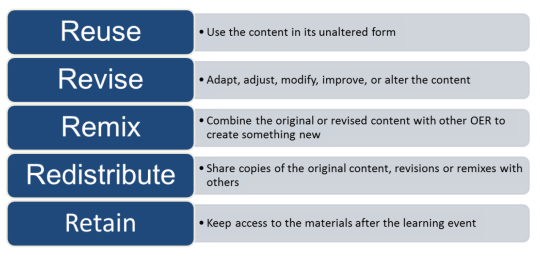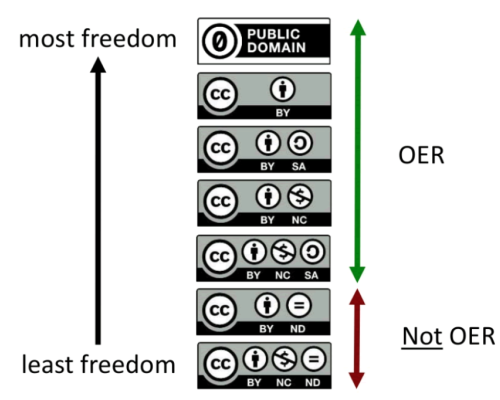Five Misconceptions about OER
Date
In a recent whitepaper , I explored the landscape of Open Education Resources (OER) and, in doing so, uncovered some misconceptions about the resource-sharing movement. Ready to dive into OER? Here are five takeaways to combat common misunderstandings.
1. OER Is Just as Much about Copyright as Cost
When choosing supplementary resources, it may be tempting to see free resources as “open.” However, the definition of “open” is best captured by David Wiley’s 5R’s :

David Wiley's 5 R's of Openness
Wiley maintains that if you aren’t able to do even one of the “R’s,” you’re not working with openly-licensed content. Thus, OER must not only be cost-free; these materials must be legally licensed as free to alter.
2. OER Can Be Used at Any Level: District-wide or in the Individual Classroom
OER can be implemented on any scale. An individual classroom teacher can use an open video or lesson plan to supplement instruction in the classroom, and a district can use OER to compile a district-wide textbook to reduce costs. An entire unit can be replaced, or a single class period can be kicked off with an OER worksheet.
3. Not Every Resource Hosted in an OER Repository Is of Good Quality
This is not to say that there aren’t incredible resources out there; this is just to remind resource seekers that no one is vetting these resources. Just as a resource needs to be double-checked for “openness,” it should also be appraised for quality. Some repositories do offer a user-rating system such as OER Commons , yet—as with many educational resources—this leaves the door open for subjective differences of opinion.
4. Creative Commons Licenses Are an Easy-to-read way to Determine a Resource’s Openness
Creative Commons is a licensing movement committed to having easily understandable “human” language in order to remove the legal jargon and demystify what’s free to adapt and what’s not. These handy symbols remove the guesswork and invite teachers to teach the concept of copyright to students, for they too can understand copyright and permissions with Creative Commons. Remember: if it’s not alterable, it’s not technically OER.

Creative Commons Licenses: Not Always OER
5. Think Larger than Lesson Plans: There Are Full Textbooks as a Part of OER
In fact, the OER movement began in higher education to ensure that all students could have access to affordable materials required for class. While high-school teachers may pick and choose segments from these higher education resources to supplement their instruction, lower- and middle-school educators will be happy to know the movement is spreading and that full textbooks are becoming available at places like CK-12 .
Want an easy way to share OER with teachers, students, and stakeholders? We loved this video from Blink Tower !

